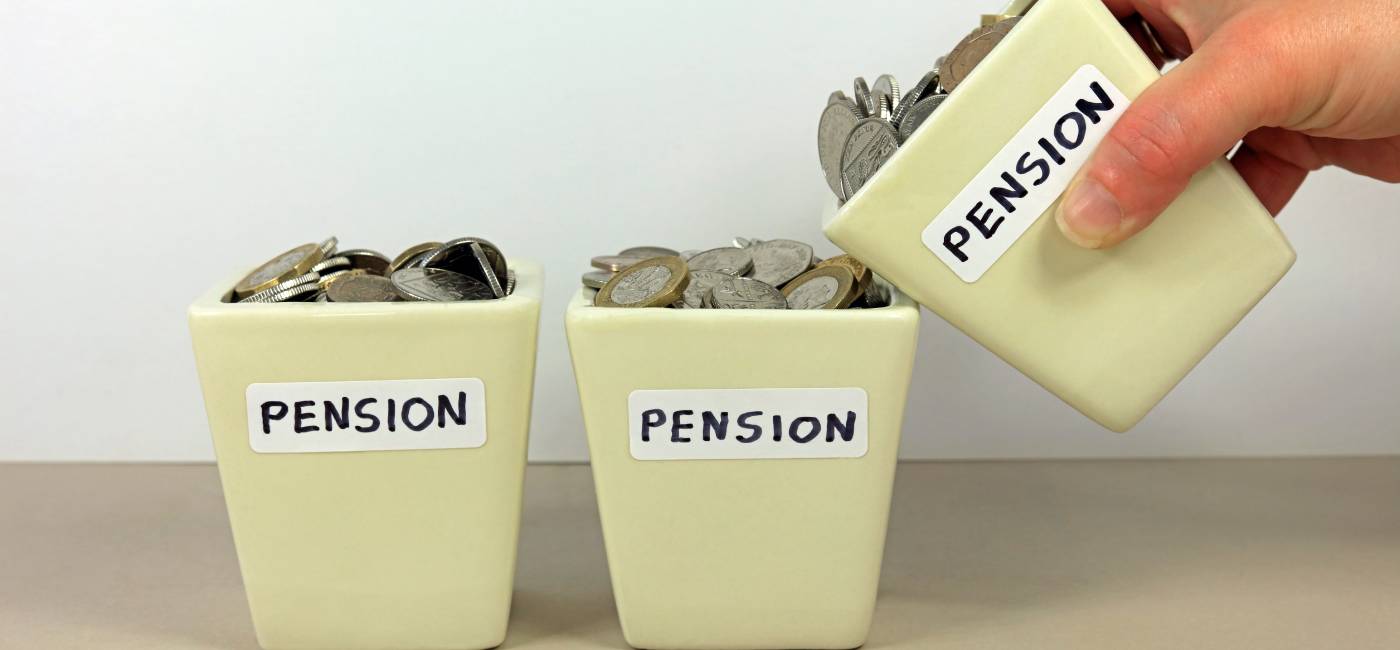
This article is for general guidance only and is not financial or professional advice. Any links are for your own information, and do not constitute any form of recommendation by Saga. You should not solely rely on this information to make any decisions, and consider seeking independent professional advice. All figures and information in this article are correct at the time of publishing, but laws, entitlements, tax treatments and allowances may change in the future.
Juggling multiple pension pots? You're not alone. Changing jobs frequently means that many people face retirement with a collection of pensions. But combining them could make them easier and cheaper to manage.
However, there’s a lot to think about first. You’ll need to think about the right platform for your pension and consider any potential downsides to consolidating.
What’s on this page?
Changing work patterns mean more of us are now reaching retirement with various pensions we have accumulated through different employers.
In generations past, people might have stayed with one or two employers for the entirety of their careers. Now this is a rarity, with people accumulating multiple pension pots throughout their lifetimes, says Megan Rimmer, a chartered financial planner at Quilter Cheviot.
“On average, people in the UK change jobs about every five years, meaning they may be auto-enrolled into a new pension scheme. This means that over a typical working lifetime, an individual might hold between six and nine different jobs,” Rimmer adds.
Rhiain Curtis, head of product at Saga Money, says that thinking about pension consolidation should be done in the context of your overall planning for retirement: "Having a retirement plan is so important. It should include your timeline for retirement, your personal goals and objectives, the income level you want or need in retirement, and how much you need to save to achieve that."
One of the biggest pros of pension consolidation is that it makes scattered pots easier to manage. You’ll be able to see your retirement savings in one place and will no longer be juggling multiple pension statements each year.
Depending on your existing pensions, changing pension might give you more options to choose where your money is invested. This might be important to you if you’re a keen investor, or because you want to choose ethical investments, or investments from a specific country.
Combining your pensions into one pot could save you money too, if the pension you are moving to has lower running costs. Rimmer adds: “You’ll pay less in overall charges if you put your money into a modern pension with competitive fees compared to an older plan with high charges.”
Finally, when you do retire, a new pension could make your retirement income easier to manage, as Sarah Pennells, consumer finance specialist at Royal London explains: “If your old provider only gives you the option of buying an annuity or cashing in your entire pension, but no way of taking regular income through income drawdown, a transfer might be beneficial.”
Although there can be advantages to pension consolidation, Rimmer points out that it’s not for everyone. There can be instances where consolidation is not the best course of action.
“Some pension schemes, especially the older ones, might offer additional benefits such as guaranteed annuity rates, higher entitlements to tax-free cash, or early retirement options. Transferring your money to a different scheme could result in the loss of these benefits,” she says.
Then there’s the issue of exit fees to consider. If you’re over 55, these will be capped at 1%. But if you’re younger, and have older pensions taken out before 31st March 2017 (when exit fees for pensions were scrapped), then the fees could be higher. Make sure you won’t be stung by high exit fees.
If you’re still working and paying into a workplace pension, it’s important not to close that account – otherwise you could end up missing out on your employer contributions.For defined contribution pensions – where the amount you get depends on the amount paid in and investment growth – consolidating them is relatively straightforward. That applies whether it’s a pension you have set up yourself, or one set up by your employer.
If you also have a defined benefit pension, you can’t transfer your defined contribution pension into your defined benefit pension.
It’s more complicated with defined benefit pensions like final salary or career average schemes. These pay a guaranteed income for life based on your earnings and the length of time you were a member.
If it’s an unfunded public sector pension, such as the NHS or Teacher’s Pension, you won’t be able to transfer it into a new defined contribution scheme.
Sarah Pennells, consumer finance specialist at Royal London, explains that the reason you can’t transfer a public sector pension scheme is that the money that you and your employer pay into your pension today goes to pay the retirement income for today’s public sector pensioners. “Your pension contributions don’t build up a fund that you can transfer. The exception is if you’re in the local government pension scheme,” says Pennells.
However, even if you can transfer your defined benefit scheme, it’s not usually recommended. “That’s because these pensions make a promise to pay you a regular payment for the rest of your life, no matter how long you live,” she adds.
For this reason, if you have a defined benefit scheme worth more than £30,000, you will need to get financial advice before you can proceed with a transfer.
To really get the benefit of consolidating your pensions, it’s vital you do some research to find the right home for your combined pot.
You can consolidate your pensions into an existing account – whether that’s your current workplace scheme or a private pension. Alternatively, you can shop around for a new pension, either one where funds are managed by a provider, or a do-it-yourself approach such as a SIPP, where you make all the investment decisions.
Craig Rickman, personal finance editor at investment platform Interactive Investor, says one of the most important things is to choose a platform that caters for your specific needs. “For example, if you’re still saving for retirement but plan to start drawing income from your pensions soon, make sure your platform offers a drawdown facility.
“Cost is a crucial factor, too. The more you pay in fees, the harder your investments will need to work,” he says.
Most platforms charge a fee that is a percentage of your pension’s value, but you can also find platforms that charge a flat fee. This means that your costs don’t go up the more your pension grows.
It can also be valuable to look at past performance when making comparisons - although that's not a guarantee of future performance. Pension providers should have this on their website, often in the form of performance reports or fund factsheets.
Rimmer adds that you should research customer service too. “It’s worth checking customer reviews and making sure you can contact the platform in the way that suits you.”

There are three key steps involved in consolidating pensions.
1. Gather information on all the pensions you have
First, round up all the pensions you own. If you’ve diligently filed the paperwork over the years or manage your pensions on an app, this shouldn’t be a problem. But if you’ve switched jobs several times or moved home, it’s possible that some pensions may have been lost or misplaced. Rickman at Interactive Investor says if this applies to you, don’t panic – the government’s pension tracing service can help track them down.
2. Check your current pensions and fees
The second step is to do your due diligence. Check the small print of your existing pensions and check for valuable benefits and guarantees. Once you’ve transferred or consolidated a pension, these might be lost, so try not to act in haste. Also compare any costs, features, types of investment available, benefits and past performance with the provider or platform you wish to home your pensions. “It’s vital to know where you stand before signing on the bottom line,” adds Rickman.
3. Start the pension transfer process with your chosen provider
Once you are happy with your decision on where your pensions should be moved to, you can instruct your chosen pension provider to initiate the consolidation process. They will contact your existing scheme(s) and request the funds. If any obstacles arise during the consolidation process, which can happen from time to time, they’ll get in touch with you. Bear in mind that even the smoothest transfers can take a few weeks to complete.
Once the transfer is complete, Curtis says there is one last bit of admin that you mustn’t overlook. “Update your expression of wish form – it’s always important for any pension scheme.” This essential piece of documentation tells your provider who you would like to inherit any unspent pension funds when you die. She adds: “Nearly three quarters of UK pension savers have never done this. But without it the pension trustees will decide where your money goes, which may not be where you would want it to be.”
It is possible to consolidate defined contribution pensions without advice, and many pension platforms are geared up to support those that do. However, you will need to seek advice before transferring a defined benefit scheme worth more than £30,000.
Even if you don’t legally need to take advice, Pennells says it can still be a sensible investment. “For example, if you have several pensions, it may make sense to consolidate some, but not all, and an adviser could talk you through the details. Your new pension provider may offer a wider range of funds than your existing provider(s) and an adviser can recommend which fund or funds would be suitable for you, taking into account the level of risk that you’re comfortable with and any other considerations, such as environmental, social and governance factors.”
People over 50 can get free guidance (but not advice or recommendations) from Pension Wise.
It’s important not to respond to firms that contact you out of the blue about pension transfers, as it could be a scam. You can check whether a firm or adviser is properly regulated on the Financial Conduct Authority website. If they’re regulated it means they must behave according to certain standards and must put the consumer’s needs first.


We're here to help you make the most with your money. With a rage of financial services designed with over 50s in mind.